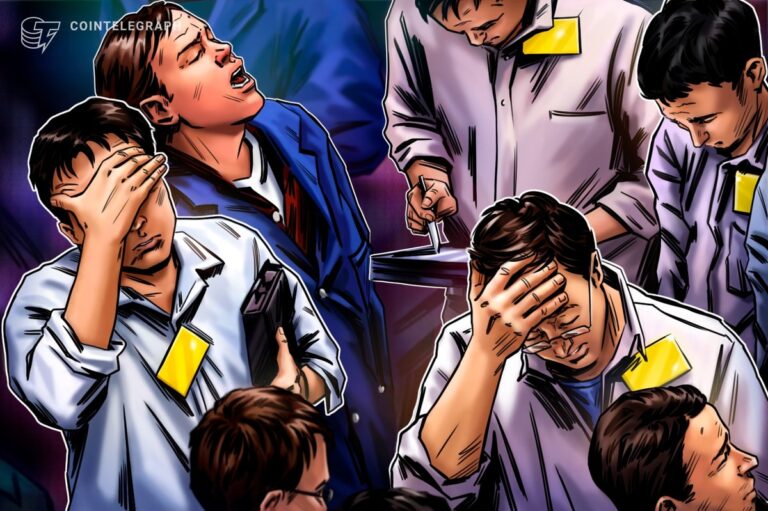
Undoubtedly, 2022 was one of many worst years for Bitcoin (BTC) patrons, largely as a result of the asset’s worth fell by 65%. Whereas there have been some express causes for the decline, similar to Might’s LUNA-UST crash and November’s FTX implosion, the principle purpose was the Federal Reserve’s coverage of chopping and elevating rates of interest.
Bitcoin’s worth had fallen from its 50% peak to pre-LUNA-UST crash lows of $33,100 due to Fed price hikes. The primary important drop in Bitcoin worth was on account of rising market uncertainty surrounding potential price hike rumors in November 2021. As early as January 2022, the inventory market confirmed cracks because of the rising stress of the upcoming tapering, which additionally had a adverse impression on crypto costs.
BTC/USD day by day worth chart. Supply: TradingView
Quick ahead yr, and the crypto market continues to face the identical situation the place headwinds from Fed price hikes have restricted important upside. The worst factor is that this regime can final for much longer than market contributors count on.
Clues come from the dot-com bubble of the Nineties
The dot-com bubble of 1999-2000 may train traders rather a lot concerning the present crypto winter and continues to color a bleak image for 2023.
The tech-heavy Nasdaq Composite ballooned to great ranges within the early 2000s, and that bubble burst when the Fed started elevating rates of interest in 1999 and 2000. As credit score grew to become costlier, the quantity of straightforward cash out there shrank, inflicting the Nasdaq to fall 77% from its peak.
 Nasdaq Composite Index Chart. Supply: Macro Trends
Nasdaq Composite Index Chart. Supply: Macro Trends
The crypto market is at present dealing with the identical situation.
Fed Chair Jerome Powell is decided to include inflation and meaning higher rates of interest for some time. Minneapolis Federal Reserve Chairman Neel Kashkari wrote in a current weblog submit that he expects terminal rates of interest to rise to five.4% by June 2023 — at present charges are within the 4.25% to 4.50% vary %.
Particularly, on the time of the dot-com bubble, the Fed stopped elevating charges in Might 2000, however the Nasdaq’s downturn continued for the following two years. Subsequently, we will count on the crypto market to proceed falling at the least till the Fed turns round. There’s a danger that the present bear market might be extended if the US financial system goes right into a 2001-like recession.
Rising indicators of a recession
In keeping with a report by Mises Institute analyst Ryan McMaken, the US dollar’s M2 cash provide turned adverse in November 2022 for the primary time in 28 years. It’s an indicator of a potential recession, which is often “preceded by a slowdown in financial progress.”
Whereas acknowledging the chance that the adverse cash progress indicator may flip right into a false sign, McMaken added that that is “typically a warning signal for financial progress and employment. It additionally serves as one other indicator that the so-called mushy touchdown promised by the Federal Reserve will probably by no means materialize.”
 Potential recession indicator utilizing USD M2 cash provide. Supply: Mises Institute
Potential recession indicator utilizing USD M2 cash provide. Supply: Mises Institute
The most recent report from the Institute of Provide Administration additionally reveals that US financial exercise contracted for the second straight month in December. The Buying Managers’ Index (PMI) for December was 48.3% and readings under 50% imply a decline. It means that demand for manufactured items is falling, probably on account of higher rates of interest.
The common US recession since 1857 has lasted 17 months, with the six recessions since 1980 lasting lower than 10 months. Technically, this recession began in August 2022 with two quarters of adverse GDP progress. Historic averages present that the present recession may final by means of June 2023 to January 2024.
Can Favorable Situations Type Earlier than 2024?
The crypto market wants the realm of straightforward cash to return to construct a sustained bull run. Nonetheless, based mostly on the Fed’s present plan, these circumstances look far into the longer term.
Solely a black swan occasion that forces the US authorities to resort to quantitative easing with low rates of interest and financial stimulus, because it did throughout the COVID-19 pandemic, can spark one other bull run.
In keeping with impartial market analyst Ben Lilly, a bubble could possibly be forming within the consumer credit score sector, which has grown exponentially to almost $1 trillion over the previous decade.
The surge has been significantly sharp up to now two years, because the US authorities stopped issuing stimulus checks. Lilly concludes that the sector may collapse if many debtors default on their loans on account of mounting financial pressure. He additionally famous that “authorities stimulus might be wanted to resolve it.”
The timing of a bubble burst is without doubt one of the most troublesome issues to foretell. It may probably coincide with the tip of the recession someday in late 2023 or 2024. Nonetheless, most traders count on crypto markets to stay in a downtrend pending affirmation of a Fed pivot or quantitative easing.
Up to now, the full crypto market cap is down 75% from its $3 trillion peak. The 2017 peak of round $750 billion is a key help and resistance level for the market. If this level breaks, your entire business market cap may fall under $500 billion.
 Chart of whole crypto market cap. Supply: TradingView
Chart of whole crypto market cap. Supply: TradingView
Whereas there could possibly be short-term bear market rallies, macroeconomic pressures are more likely to erode any optimistic strikes.
The views, ideas, and opinions expressed herein are solely these of the authors and don’t essentially mirror or characterize the views and opinions of Cointelegraph.
This text doesn’t include any funding recommendation or suggestion. Each funding and trading transfer entails danger and readers ought to do their very own analysis when making a choice.